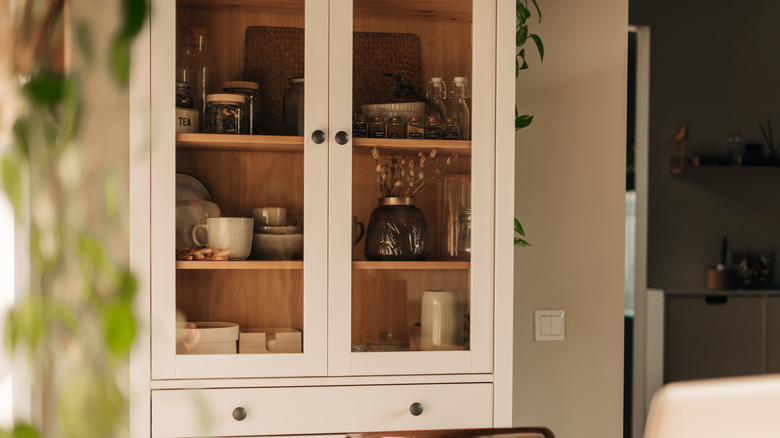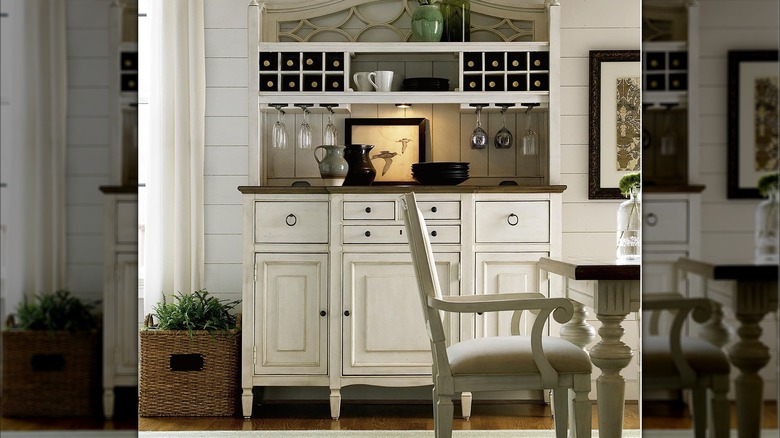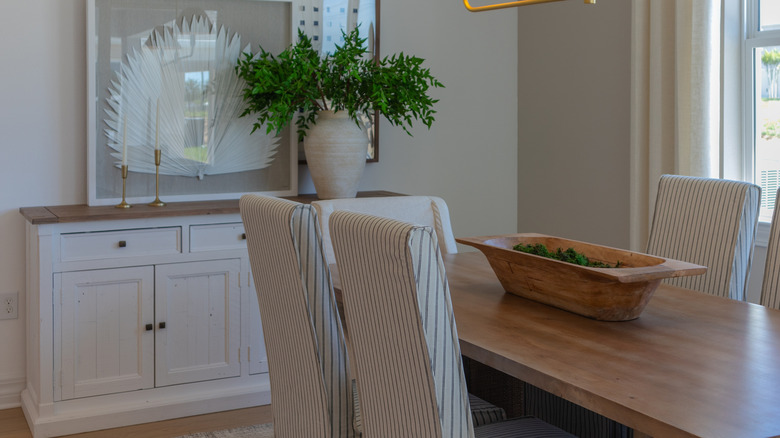Kitchen Buffet Vs Sideboard: The Biggest Difference, And Which Is Right For Your Home
Storage always seems to run out, no matter how many cabinets you have. While maximizing storage space in your small home is usually the top priority, it's often necessary to add to existing storage when possible. But finding the right storage piece for your dinnerware and kitchenware can feel overwhelming with so many options, especially since not all of them serve the same purpose.
Two cabinet types that often get confused are the kitchen buffet and the sideboard. They may look similar, but they're designed to meet different needs. For example, a kitchen buffet is usually taller, with open shelving or cabinets for easy access to dining essentials. A sideboard, on the other hand, is lower and often has enclosed storage for that sleek look in a dining or living area.
The best choice depends on how and where you plan to use it. A kitchen buffet is great for practical storage in a busy kitchen or dining space. A sideboard, meanwhile, is a better fit if you want something more refined that can add to the aesthetic of your dining room without taking up too much visual space. Either way, they both add style and function to your home!
Kitchen buffet: Open and functional
A kitchen buffet is a practical choice for dining storage. It's usually tall and designed to keep everyday essentials handy with its hutch or open shelves. It also works like an extension of your kitchen because of the space it can give for serving dishes and even small appliances like a coffee maker or toaster, among others.
Some kitchen buffets can even double as a serving station, providing a convenient spot to set up food during gatherings. This makes it a smart choice for a homeowner who loves hosting or whose kitchen is short on cabinet space. It also suits an open-plan kitchen or dining room since having easy access to kitchenware and dining essentials makes entertaining smoother.
A kitchen buffet is a great option for families who need practical everyday storage without giving up style. It has a more casual and functional feel, too, so it might not be the best choice if you're looking for something polished and decorative or a piece that blends seamlessly into a formal dining room. A kitchen buffet's open shelving or glass-front cabinets can also make it harder to keep items looking neat. And they may not offer the same level of protection for delicate items like glassware compared to a fully enclosed sideboard.
Sideboard: Style over function
A sideboard can be described as the sophisticated cousin of the kitchen buffet. It's typically lower with a longer profile that makes it ideal for a formal dining room, entryway, or even a living room. Sideboards also often feature enclosed storage – like cabinets or drawers — which makes them perfect for storing fine china and keeping glassware and linens dust-free.
But unlike a buffet, a sideboard is less about function and more about style. It's the way to go if you want a piece of furniture that feels polished and elegant in your separate dining area. It's also a great choice if you prefer hidden storage to keep your space looking neat and uncluttered. And because sideboards have a lower design, they can also double as a display surface for decorations like a set of candles, framed photos, or a nice vase.
However, sideboards can also be less versatile since their lower height limits storage capacity compared to taller buffets or cabinets. Their enclosed storage may also not be ideal if you need quick and easy access to frequently used items. Some sideboards also prioritize aesthetics over durability. This means they're excellent for making an artistic statement but may not withstand heavy use in a busy household.


